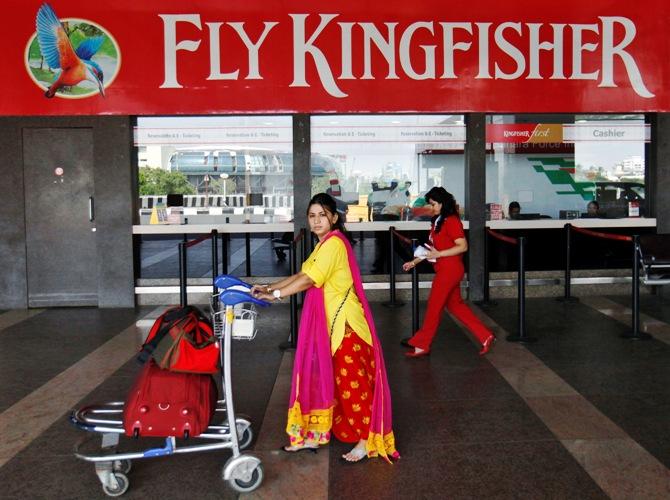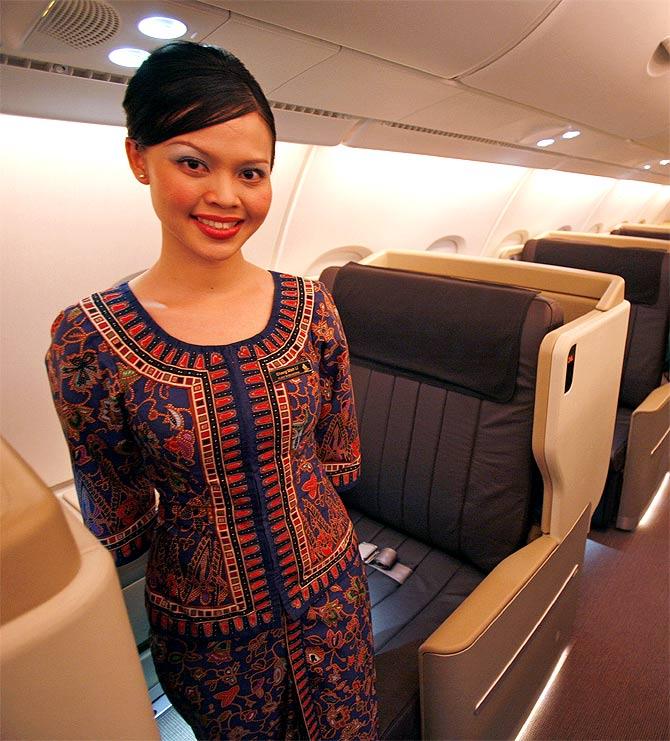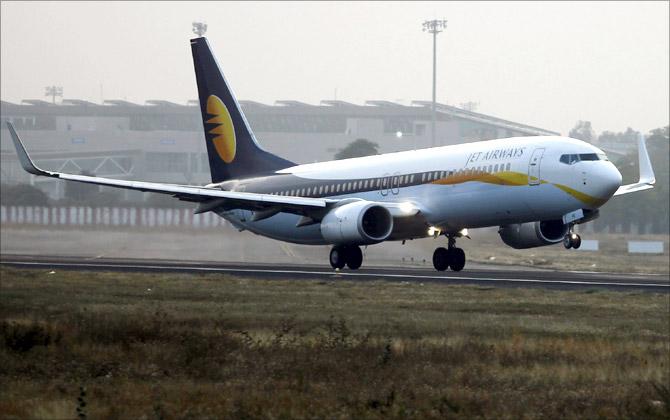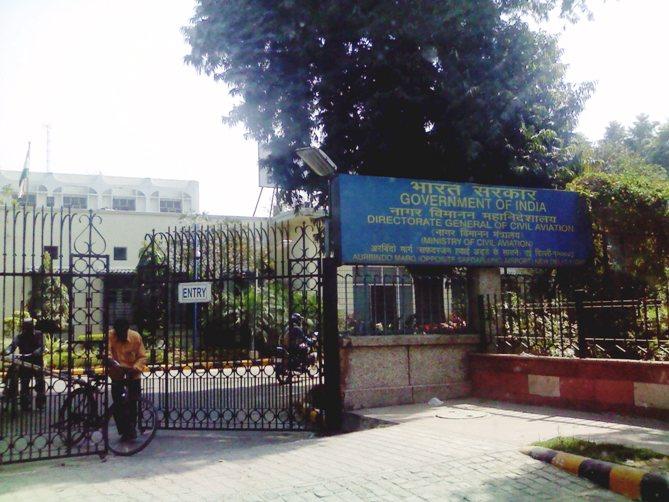Photographs: Danish Siddiqui/Reuters Aneesh Phadnis and Surajeet Dasgupta in Mumbai/New Delhi
In 2012-13, the closure of Kingfisher Airlines had nearly 5,000 employees out of jobs, spreading shock in the aviation industry.
Growth in the sector was muted the next financial year and private airlines, with only 18 aircraft additions, were not able to create more than 2,000 additional jobs.
In other words, the airline job market had shrunk.
Will it get back on course in 2014-15? Few would hazard a guess, since it is based on many uncertainties.
The good news is that two new airlines are expected to join the skies.
One is Air Asia's joint venture with the Tatas; the low-cost carrier could begin flights next month.
The other is the full-service carrier to be formed separately by the Tatas and Singapore Airlines, which should get in the air in the fourth quarter of the calendar year.
. . .
Aviation sector to see 3,000 new jobs in 2014-15
Image: A man looks out through a window with an advertisement of SpiceJet Airline, on a commercial building in Ahmedabad.Photographs: Amit Dave/Reuters
And, old warhorse IndiGo has said it would add nine aircraft to its fleet.
Yet, there are red signals, too.
The future of SpiceJet, expected to make huge losses, is uncertain.
The restructuring of Jet Airways, to align itself with Etihad Airways, could also mean job losses.
Says Kapil Kaul, chief executive, Indian subcontinent and West Asia at the Centre for Asia Pacific Aviation, “Depending on when they start operations, our assessment is that AirAsia and SIA will bring in anything between 10 and 15 aircraft.
"However, there is also a possibility that some of the other airlines like SpiceJet and Jet could trim their workforce. But I still feel the net impact will be positive.”
. . .
Aviation sector to see 3,000 new jobs in 2014-15
Image: A stewardess posing for a photo in the business class cabin Airbus A380 superjumbo after it landed in Singapore.Photographs: Rediff Archives
Based on industry norms, each aircraft spawns about 100 to 110 direct jobs.
With between 23 and 28 new aircraft coming, that means additional 2,700-3,000 jobs.
However, this will only fructify if the impediments in the takeoff of the new airlines are removed. AirAsia’s operator licence clearance is pending a decision in court (the airline has already hired 350 people).
SIA has to still to get the operator’s licence from the government.
And, GoAir, which is to take in two new aircraft, as well as IndiGo, must not change their minds.
Even regional airlines Air Costa has said it would recruit 400 for its two new aircraft, to be delivered this year.
However, as Kaul says, there is an uncertainty factor, which could reduce net job creation for the year.
. . .
Aviation sector to see 3,000 new jobs in 2014-15
Image: A Jet Airways aircraft.Photographs: Reuters
There was speculation of 40 employees being removed from the cargo department of Jet Airways, which the airline denied.
Still, most analysts say the airline has been reducing the number of stations where the planes deploy and further changes could be in the offing as it integrates with Etihad.
As for Spicejet, it is in a financial mess.
A Jet spokesperson said the airline continued to recruit in areas such as revenue management, cabin crew and pilots, based on operational requirements.
“Depending on the work requirements, the contractual manpower would be engaged through our service providers,’’ Jet said.
GoAir and SpiceJet did not respond to queries.
. . .
Aviation sector to see 3,000 new jobs in 2014-15
Image: IndiGo, the largest domestic airline, is expanding and hiring staff across departments.Photographs: Courtesy, IndiGo
IndiGo, the largest domestic airline, is expanding and hiring staff across departments.
An IndiGo spokesperson said “We have employee strength of 8,000-plus and have seen a year-on-year growth in each of the eight years of our operations.
"As we at IndiGo are adding to our fleet every month, we are active on expanding our teams across roles. This year, we will hire another 1,000 colleagues to the team.”
An airline workforce comprises ground staff (around 45 per cent), cabin crew (20 per cent), pilots (15 per cent), engineers and technicians (10 per cent) and the rest (10 per cent) in administration, sales, marketing, revenue management and other functions.
Government-owned Air India has been able to reduce its staff strength primarily by not hiring people who retire — in simple terms, a lost opportunity for the aviation industry.
With around 1,500 employees retiring every year, it hopes to have a staff strength of 9,500 by 2015-16.
In sum, keep your fingers crossed and hope no airline changes its plan, and that the two new ones get to eventually take off this year.
. . .
Aviation sector to see 3,000 new jobs in 2014-15
Image: DGCA New Delhi headquarters.Photographs: Ashish Bhatnagar/Wikimedia Commons
PRAYING FOR A SMOOTH TAKE OFF
- 2012-13: Kingfisher Airlines closure leads to about 5,000 job losses
- 2013-14: The 2,000 additional jobs created not enough to absorb the number of people who lost jobs. Overall, the job market shrunk
- 2014-15 : Anything between 2,700 to 3,000 new jobs to be created. However, the net increase could come down, depending on the future shape of SpiceJet & Jet Airways, and whether AirAsia India and Tata-Singapore Airlines take off this year
- With Air India not replacing the 1,500-odd employees retiring every year, an opportunity for additional jobs is lost
. . .








article